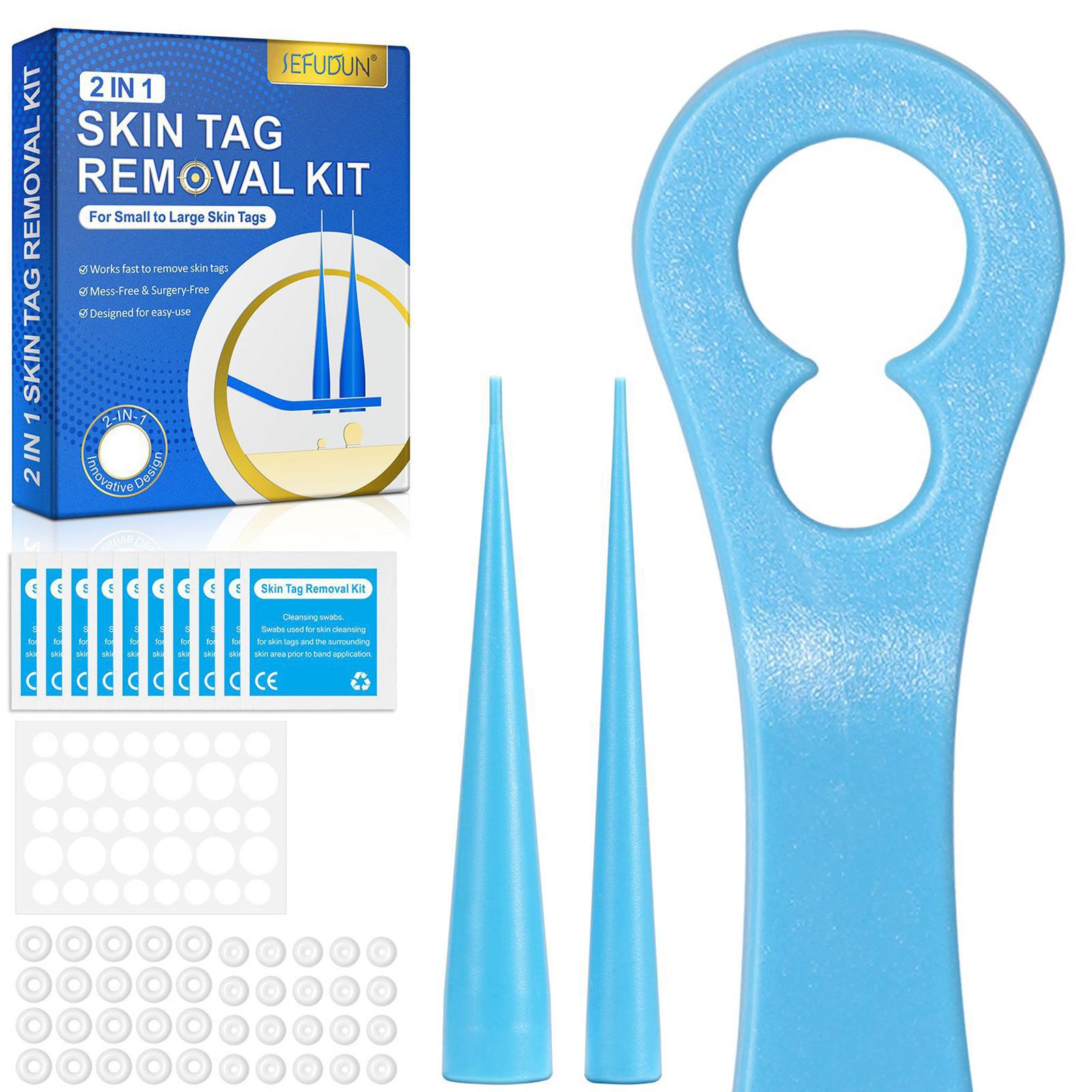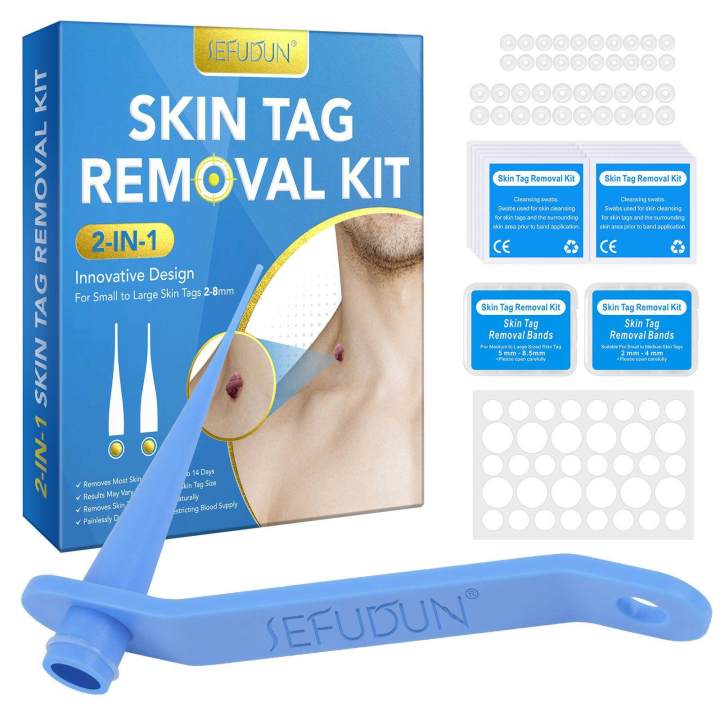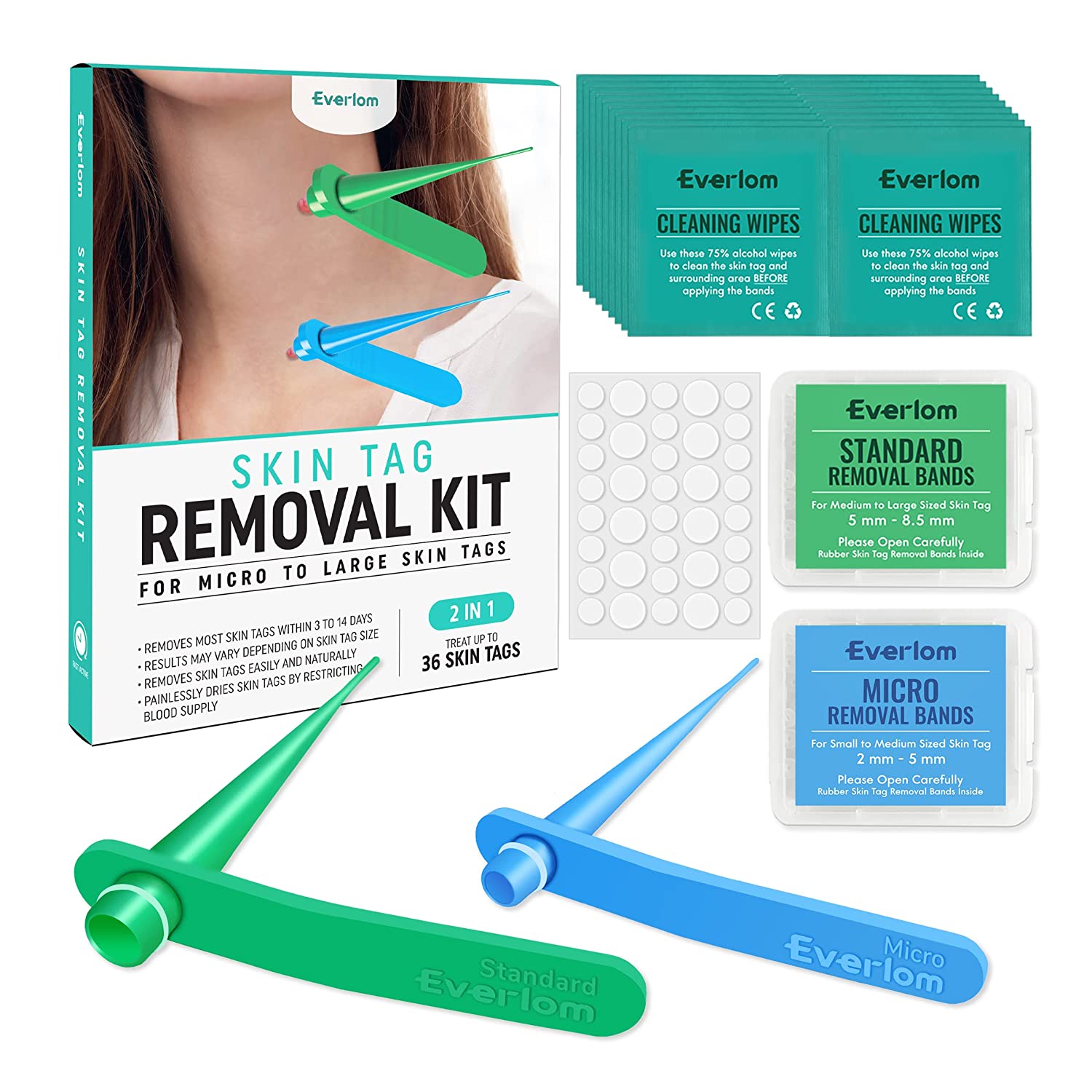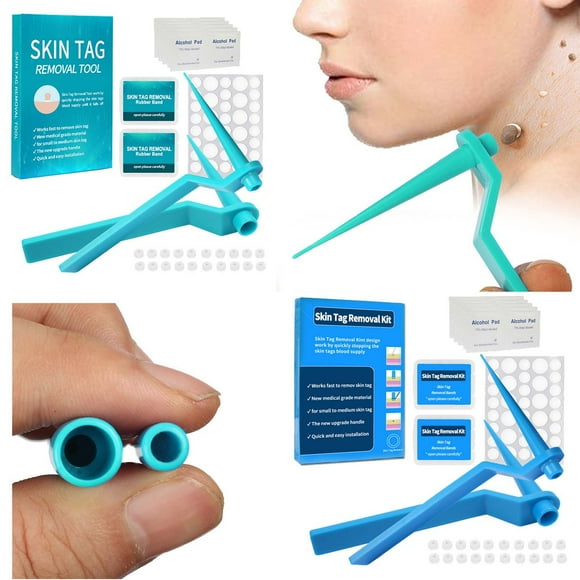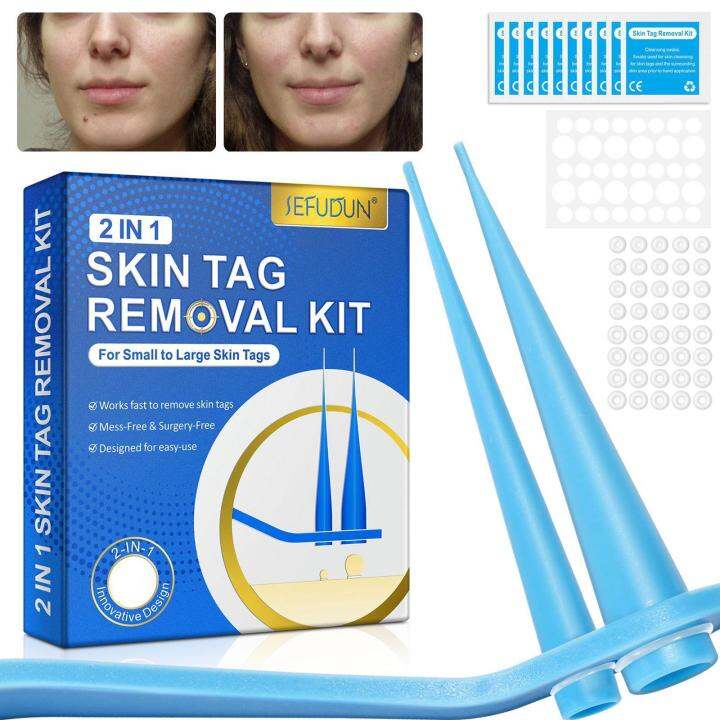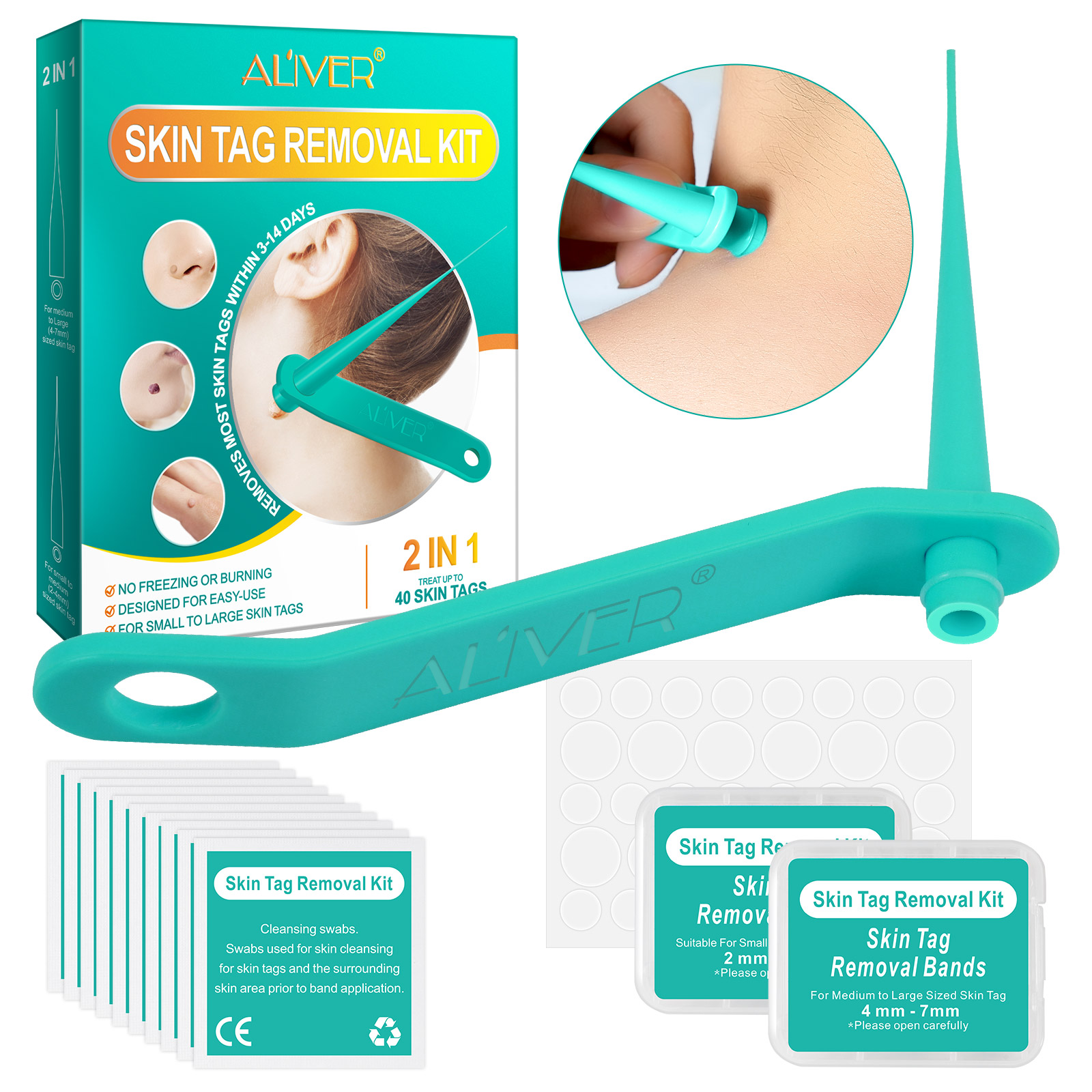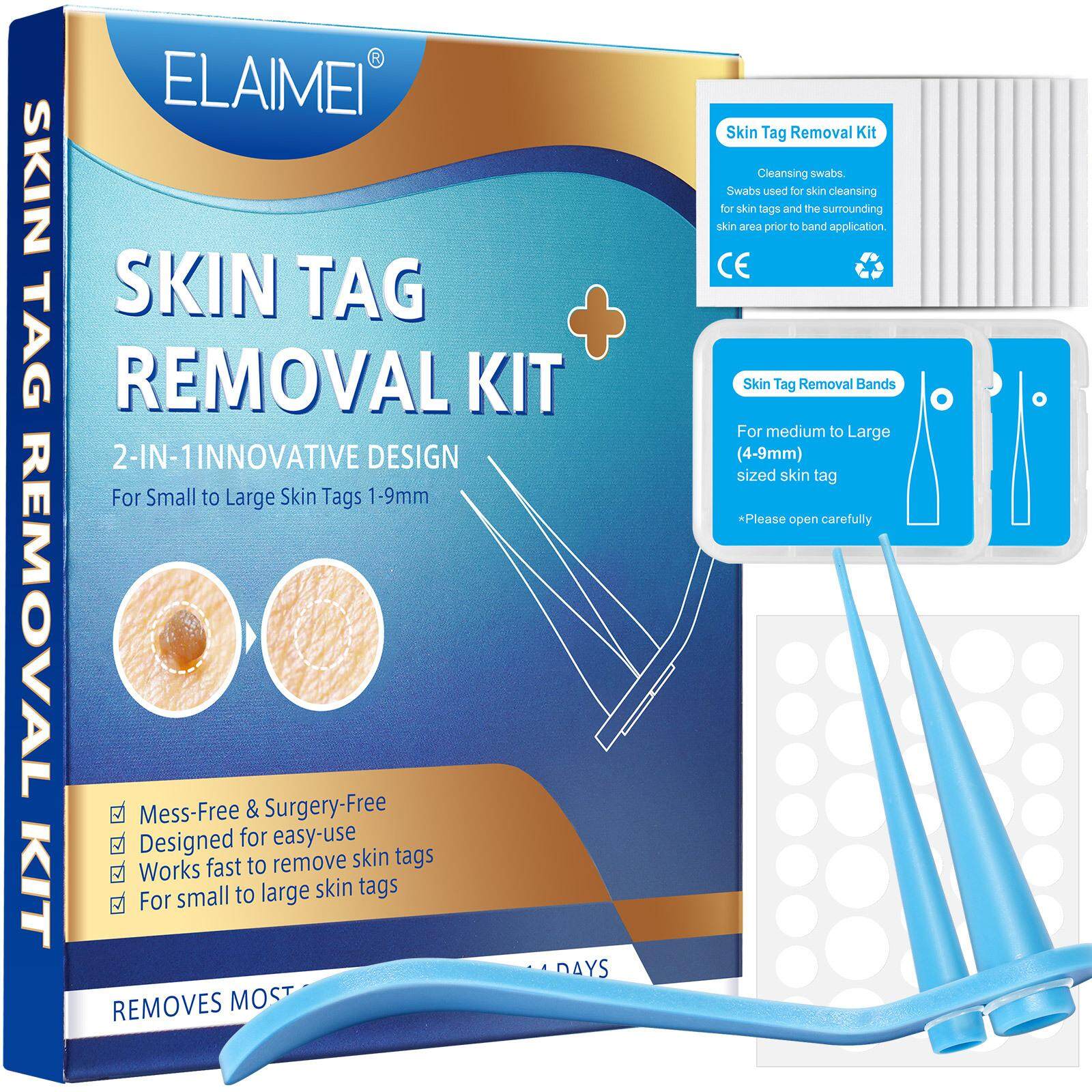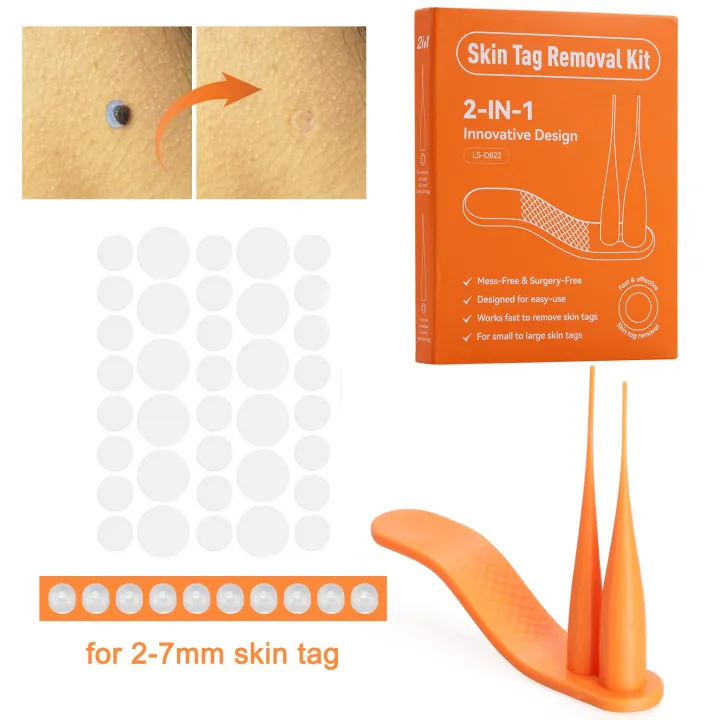Skin Tag Removal Kit Rubber Bands

The allure of a smooth, blemish-free complexion has fueled a surge in over-the-counter cosmetic procedures. Among the most readily available solutions are skin tag removal kits utilizing tiny rubber bands, promising a quick and affordable way to eliminate these benign skin growths at home. However, dermatologists and health organizations are raising concerns about the safety and efficacy of these kits, urging caution and professional consultation.
This article delves into the rising popularity of skin tag removal kits using rubber band ligation, exploring the potential risks, benefits, and expert opinions surrounding their use. It examines the medical community's response to the trend and offers a balanced perspective to help individuals make informed decisions about managing skin tags.
The Rise of DIY Skin Tag Removal
Skin tags, medically known as acrochordons, are small, soft, flesh-colored growths that often appear on the neck, armpits, eyelids, and groin. They are generally harmless, but their appearance can be a cosmetic concern for some individuals. This concern has led to increased demand for accessible and affordable removal methods.
Skin tag removal kits utilizing rubber band ligation have become increasingly popular due to their low cost and ease of access. These kits typically contain small rubber bands and a device to help roll the band onto the base of the skin tag, cutting off its blood supply.
The appeal of these kits lies in their promise of a simple, pain-free solution that can be administered in the privacy of one's home. The low price point is also a significant factor, particularly when compared to the cost of professional dermatological procedures.
Expert Concerns and Potential Risks
Despite their accessibility, dermatologists are voicing serious concerns about the safety and efficacy of over-the-counter skin tag removal kits. The primary concern revolves around the risk of infection, scarring, and misdiagnosis.
Dr. Emily Carter, a board-certified dermatologist at the American Academy of Dermatology, warns against self-treating skin growths without proper diagnosis. "What appears to be a skin tag could potentially be something more serious, such as a mole or even a skin cancer. Attempting to remove it yourself could delay proper diagnosis and treatment."
Infection is a significant risk associated with at-home removal, particularly if proper hygiene practices are not followed. Attempting to remove a skin tag in a non-sterile environment can introduce bacteria, leading to infection, inflammation, and potential complications.
Scarring is another potential consequence of using rubber band ligation incorrectly. Applying excessive pressure or leaving the band on for too long can damage surrounding skin tissue, resulting in permanent scarring. Moreover, individuals with underlying health conditions, such as diabetes or compromised immune systems, are at higher risk of complications.
Furthermore, the effectiveness of rubber band ligation can vary depending on the size and location of the skin tag. Larger skin tags may not respond effectively to this method, and attempting to remove them could lead to incomplete removal and persistent growth.
The Professional Alternative: Dermatological Procedures
Dermatologists offer a range of safe and effective methods for skin tag removal. These procedures are performed in a sterile environment by trained professionals, minimizing the risk of infection and scarring.
Common dermatological procedures for skin tag removal include cryotherapy (freezing with liquid nitrogen), surgical excision, electrocautery (burning with an electric current), and shave excision. Each method has its own advantages and disadvantages, and the choice of procedure depends on the size, location, and number of skin tags.
Consulting with a dermatologist allows for accurate diagnosis of the skin growth, ensuring that it is indeed a benign skin tag and not something more serious. Dermatologists can also provide personalized recommendations for removal based on individual skin type and medical history.
Patient Perspectives: Weighing the Pros and Cons
Patient experiences with skin tag removal kits vary. Some individuals report successful removal with minimal discomfort, while others experience complications such as infection or scarring. It's important to consider these varied perspectives.
A common sentiment among those who have used these kits successfully is the convenience and cost-effectiveness. They appreciate the ability to address their cosmetic concerns in the privacy of their own homes without incurring significant expenses.
However, many individuals also express concerns about the potential risks and uncertainties associated with DIY removal. They worry about the possibility of infection, scarring, and misdiagnosis, leading them to seek professional medical advice.
Regulatory Oversight and Consumer Education
The increasing popularity of over-the-counter skin tag removal kits has raised questions about regulatory oversight and consumer education. Currently, these kits are generally classified as cosmetic products and are not subject to the same rigorous testing and approval processes as medical devices.
Advocates for stricter regulation argue that these kits should be subject to greater scrutiny to ensure their safety and efficacy. They also emphasize the need for clear and comprehensive labeling that informs consumers about the potential risks and benefits of using these products.
Consumer education is crucial in empowering individuals to make informed decisions about skin tag removal. Providing accurate information about the risks and benefits of both DIY and professional methods can help individuals weigh the pros and cons and choose the option that is best suited to their needs.
Organizations like the Food and Drug Administration (FDA) play a critical role in monitoring the market and ensuring that cosmetic products are safe for consumers. However, it is ultimately the responsibility of individuals to conduct their own research and consult with healthcare professionals before using any over-the-counter treatment.
Looking Ahead: A Balanced Approach to Skin Tag Removal
The debate surrounding skin tag removal kits highlights the importance of balancing accessibility and affordability with safety and efficacy. While these kits may offer a convenient and cost-effective solution for some individuals, they are not without risks.
A balanced approach involves educating consumers about the potential risks and benefits of both DIY and professional methods. This includes emphasizing the importance of proper diagnosis, hygiene practices, and realistic expectations.
Ultimately, the decision to use a skin tag removal kit or seek professional treatment is a personal one. However, it is crucial to make an informed decision based on accurate information and professional medical advice to minimize the risk of complications and ensure optimal outcomes.

